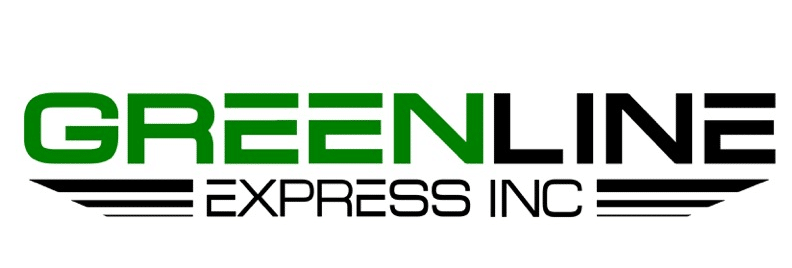What Is Redelivery in LTL Freight (and Why It Happens So Often)
Redelivery in LTL freight isn’t just a one-off inconvenience — it’s a silent profit killer. Whether you’re managing logistics for a regional food brand or a national beverage distributor, redeliveries cost time, money, and relationships. And the worst part? Most of them are avoidable.
In simple terms, a redelivery happens when the carrier shows up with your freight, but the delivery can’t be completed. That could be because:
- The receiver wasn’t ready or available
- No dock was available at the scheduled time
- The shipment required a liftgate that wasn’t requested
- Access to the site was limited or incorrectly listed
- The freight arrived outside the appointed window
- The order was refused due to damage or paperwork issues
Redelivery might sound like a minor issue, but it sets off a domino effect: your freight gets held up at the terminal, customers start asking where their order is, and your operations team scrambles to rebook. Even worse, it often leads to accessorial charges that weren’t in your original budget.
Why it’s more common in LTL:
With dry LTL or reefer LTL, carriers consolidate multiple shippers’ freight into a single truck, which means tight delivery routes and timelines. If one drop-off gets delayed or denied, the rest of the route may suffer — and you may get bumped for the day. That creates a cycle of delays that frustrate customers and cost your business.
When you’re shipping time-sensitive goods — like food, beverage, or temperature-controlled product — the stakes are even higher. One failed delivery can compromise product quality or shelf life, or leave a buyer scrambling to reroute distribution.
At GreenlineX, we’ve seen this scenario too many times from new clients who weren’t aware of what caused the breakdown in the first place. The good news? Most redeliveries can be prevented with proactive planning and the right partner — especially one with strong site-level relationships and crossdock support in your delivery zone.
The True Cost of Redelivery: Fees, Delays & Damaged Relationships
If you’ve ever skimmed past a “Redelivery Charge” on your freight invoice without a second thought, it’s time to slow down. Redelivery costs more than just a line item — it can hurt your entire supply chain.
Direct costs you’ll face:
- Redelivery fee: Typically $75–$150, sometimes more for rural or limited-access areas
- Storage fees: If the carrier holds freight overnight or over the weekend
- Re-consignment: If delivery address needs to change after first attempt
- Detention fees: From delayed appointment times or paperwork issues
- Missed sales or chargebacks: If delivery windows at retailers or plants are missed
But the damage doesn’t stop at your wallet. Customer confidence and brand reliability take a hit too. If a buyer gets late shipments, incorrect delivery details, or temperature-compromised product, they might not complain — they’ll just move on to a carrier or vendor with better performance.
And remember, the cost compounds if you’re shipping perishable or time-sensitive goods. Redeliveries in reefer LTL can mean product spoilage, FDA compliance issues, or expensive disposals.
A real-world scenario:
One beverage client we worked with had a major customer in the Midwest who operated on a strict delivery window. When their previous carrier missed it — twice in one month — the retailer instituted a chargeback policy. Those redelivery fees, plus fines, totaled over $3,000 in just 30 days.
We onboarded them to our network, used site-level notes to confirm dock hours, and rerouted freight through our Sacramento crossdock. The result? Zero redeliveries for six months, and the buyer relationship was salvaged.
Top 5 Ways to Avoid Redeliveries Before They Happen
Redelivery issues aren’t just a shipping department problem — they’re a breakdown in information flow, coordination, and expectation setting. But with the right steps in place, most redeliveries can be avoided entirely. These five proven tactics are what we advise every shipper to follow — especially for LTL freight that’s time- or temperature-sensitive.
1. Confirm Dock Hours and Access Restrictions
This is one of the most common causes of redelivery and one of the easiest to prevent. Many delivery locations (especially food warehouses and retailers) have narrow receiving windows or special access rules like liftgate requirements, dock size restrictions, or appointment-only drop-offs. Before you ship, make sure:
- The consignee’s dock hours are accurate
- Any limited-access notes are clearly provided
- Drivers have the right contact number if there’s an issue on arrival
2. Schedule Appointments Proactively
Appointment-based delivery is now the standard for many large receivers — and not just in the grocery sector. But if your TMS system doesn’t schedule delivery appointments promptly (or if you don’t follow up), the carrier may attempt delivery before the receiver is ready. That guarantees a redelivery.
At GreenlineX, we always log appointment times into our system before freight leaves the dock, and we confirm availability again 24 hours prior when needed.
3. Include Special Instructions on the BOL
If your freight requires lumper services, inside delivery, driver assist, or temperature checks, be explicit on the Bill of Lading (BOL). Don’t assume the dispatcher or driver will know from the commodity type alone. Even something as simple as “Check in at Guard Shack A” can prevent a missed window.
4. Coordinate With the Receiving Location
Many redeliveries happen not because of the carrier — but because receiving sites weren’t aware or ready. A simple heads-up call or email to the receiving dock with expected delivery time and carrier name can eliminate confusion and prevent rejections.
This is especially true when shipping to distribution centers that share dock space with multiple vendors or divisions.
5. Work With a Carrier That Knows the Area
When you work with a partner that has strong local delivery knowledge, the chance of redelivery drops drastically. At GreenlineX, our team has deep familiarity with Northern California and key Midwest lanes, which means we know which docks tend to run behind, which sites require early morning arrival, and how to avoid last-mile bottlenecks.
Our asset-based team handles redeliveries with built-in site-level knowledge, not guesswork — that’s how we’ve kept redelivery rates low even in high-volume seasons.
Want more ways to reduce LTL headaches? Check out our in-depth guide on how to save money on reefer LTL freight without sacrificing reliability.
How GreenlineX Helps Prevent and Manage Redeliveries
At GreenlineX, we don’t just treat redelivery as a cost center — we treat it as a service opportunity. Because when your freight is on the line, and your customer expects it delivered on time and intact, you need a partner that’s ready with solutions, not excuses.
Proactive appointment scheduling
As soon as we receive shipment details, our operations team books appointments and verifies site info. We flag anything that looks off — from mismatched dock hours to hard-to-reach locations — and get ahead of it before freight rolls.
Local delivery expertise
Our asset-based delivery team in Northern California makes daily pickups and deliveries across Sacramento, the Bay Area, Fresno, and more. That means we’re familiar with key drop locations, appointment patterns, and local nuances that national carriers often miss.
This boots-on-the-ground knowledge means we catch and prevent issues like:
- Construction access delays
- Unclear dock signage
- Split dock routing for different vendors
Crossdock and redelivery support
Missed your slot? It happens. But with our Sacramento-based crossdock facility, we can hold, rework, and redeliver your freight fast — without waiting days or bouncing it between terminals.
Whether your product needs to be re-iced, re-palletized, or just re-timed, our team can reset the clock on delivery and help you avoid customer fallout.
Real-time updates and documentation
If something goes wrong in transit — bad weather, dock delays, load issues — we communicate immediately. And if a redelivery is needed, we ensure all documentation (PODs, lumper receipts, OSD claims) is clear and ready to resolve any downstream delays.
In short, we make redelivery the exception — not the norm.
Conclusion: Stop Letting Redeliveries Drain Your Time and Budget
In the world of LTL freight, redelivery isn’t just a hassle — it’s a silent profit killer. It introduces delays, triggers unexpected accessorial fees, and can even damage customer relationships if timelines slip too far. But most redeliveries are avoidable with the right mix of foresight, technology, and carrier communication.
At GreenlineX, we believe freight should be predictable — and when it’s not, we step in fast to make it right. Whether you’re shipping daily into complex receiving sites or managing one-off regional deliveries, our team knows how to prevent redelivery issues before they even start. And if something goes wrong? Our Sacramento-based crossdock and redelivery services give you a second chance without burning a week on re-coordination.
Need a more reliable partner for redelivery support across Northern California? Contact GreenlineX today and let’s talk about how we can keep your freight on track.
Learn more about redelivery best practices and freight receiving guidelines at transportation.gov — a helpful resource for understanding site compliance and carrier responsibilities.



